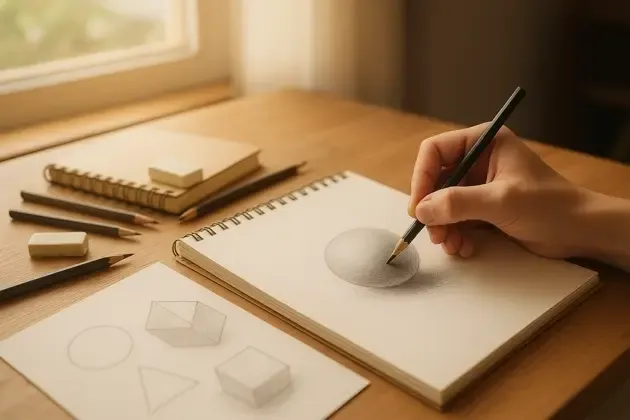Pencil Drawing for Beginners: Basic Tips to Start the Right Way
Learn how to begin your drawing journey with simple shapes, the right materials, and practical tips that help you grow with confidence.
Introduction
It can be said that pencil drawing is one of the oldest forms of artistic expression and, I would also dare to say, that it works as a structural pillar in the creation of other artistic styles, such as watercolor, pastel, oil painting, among others.
In this case, for the creation and development of studies and sketches. Besides that, the material itself also works as a form of artistic expression, with characteristics of its own.
The Drawing
Painting or drawing are branches of visual arts, and artists usually practice drawing as a form of visual expression and to develop the motor skills needed to execute the artwork.
Many people think that pencil drawing is limited to visual art because it uses the pencil as the only medium of creation. However, pencil drawing involves an extensive range of variations in the use of pencil points and lead weights, and it’s important to know them and how to apply them, as they range from subtle lines to heavy shading.
Basic Tips to Start the Right Way
The primary step for taking your first steps into the drawing process, even before choosing a subject, is to practice simple and basic shapes such as: circles, squares, triangles, straight lines, curves, cubes, spheres, and pyramids. This should be your first step, and these shapes should also become your best friends.
After practicing the ABCs of drawing, you can choose a subject — and there are countless possibilities, such as representations of living beings — plants, animals, or human portraits, to start your first drawings.
Landscapes, places, and scenes can also be great themes for pencil drawing. In addition, cityscapes, flowers, everyday objects, fruits, automobiles, and other topics are excellent themes for practice. With imagination, artists can also develop the skills to create their own styles, such as cartoons and caricatures.
However, my suggestion is that your first drawings should be of simple themes and forms. This will help you build confidence and the necessary skills to evolve in your drawings in a consistent way.
Using pencils with different tones, types, and sizes of lead offers various possibilities of contrast in artistic creation. This allows you to use graphite to study light and shadow, for example.
There are many types of graphite with different tonalities, which allows a great variety of effects in application, helping in the creation of shading — whether on the object or the projected shadows.
There are also other drawing materials, like paper, ranging from the simplest ones to high-quality ones, which are relatively more expensive. Texture, color, and strength vary from one type to another. In the beginning, I suggest you stick with simpler paper. This allows you to focus on developing and improving your drawing technique.
Conclusion
The beginner artist must understand that pencil drawing is an essential tool in any form of visual art, and that the variations and possibilities can be mastered as you develop your skills.








0 comments